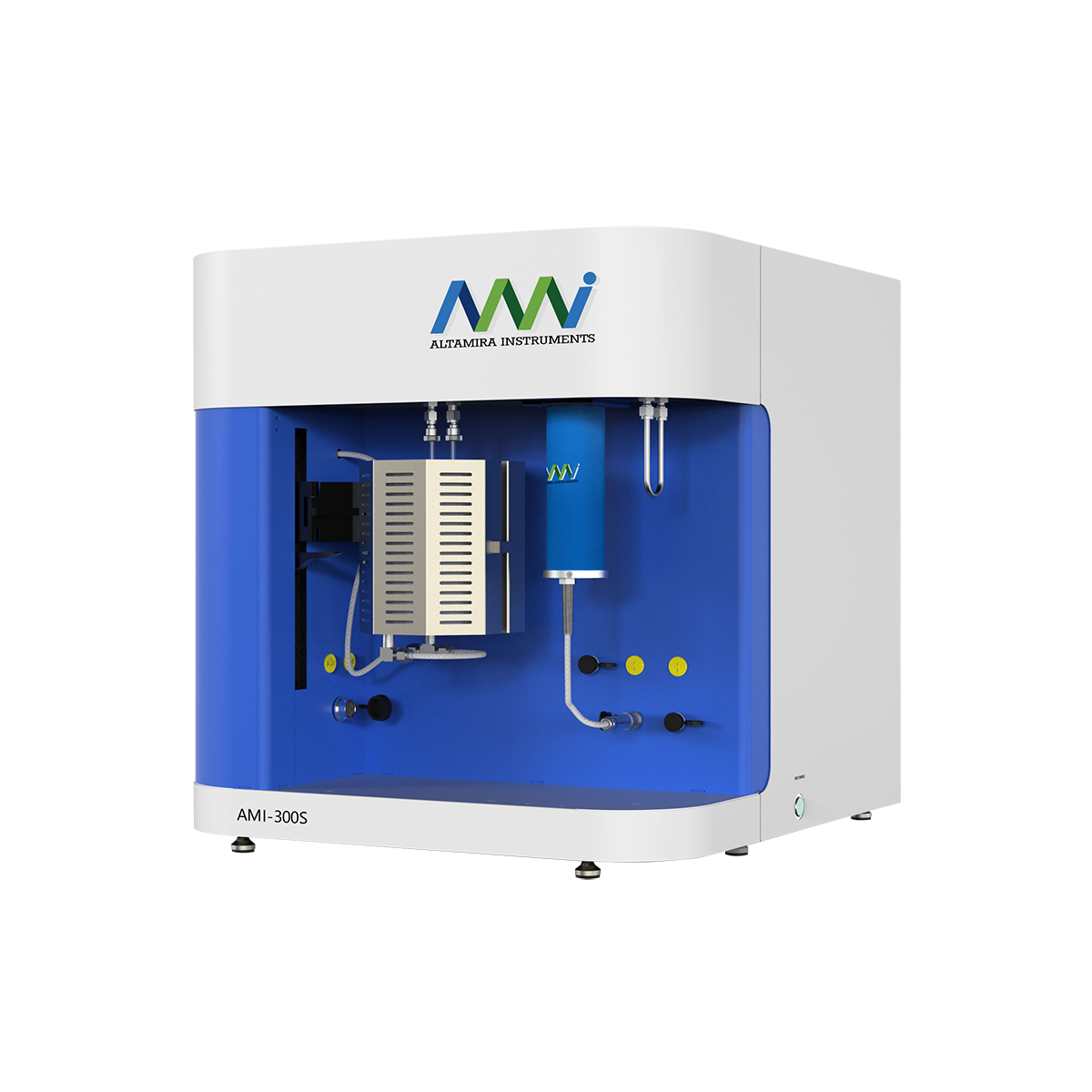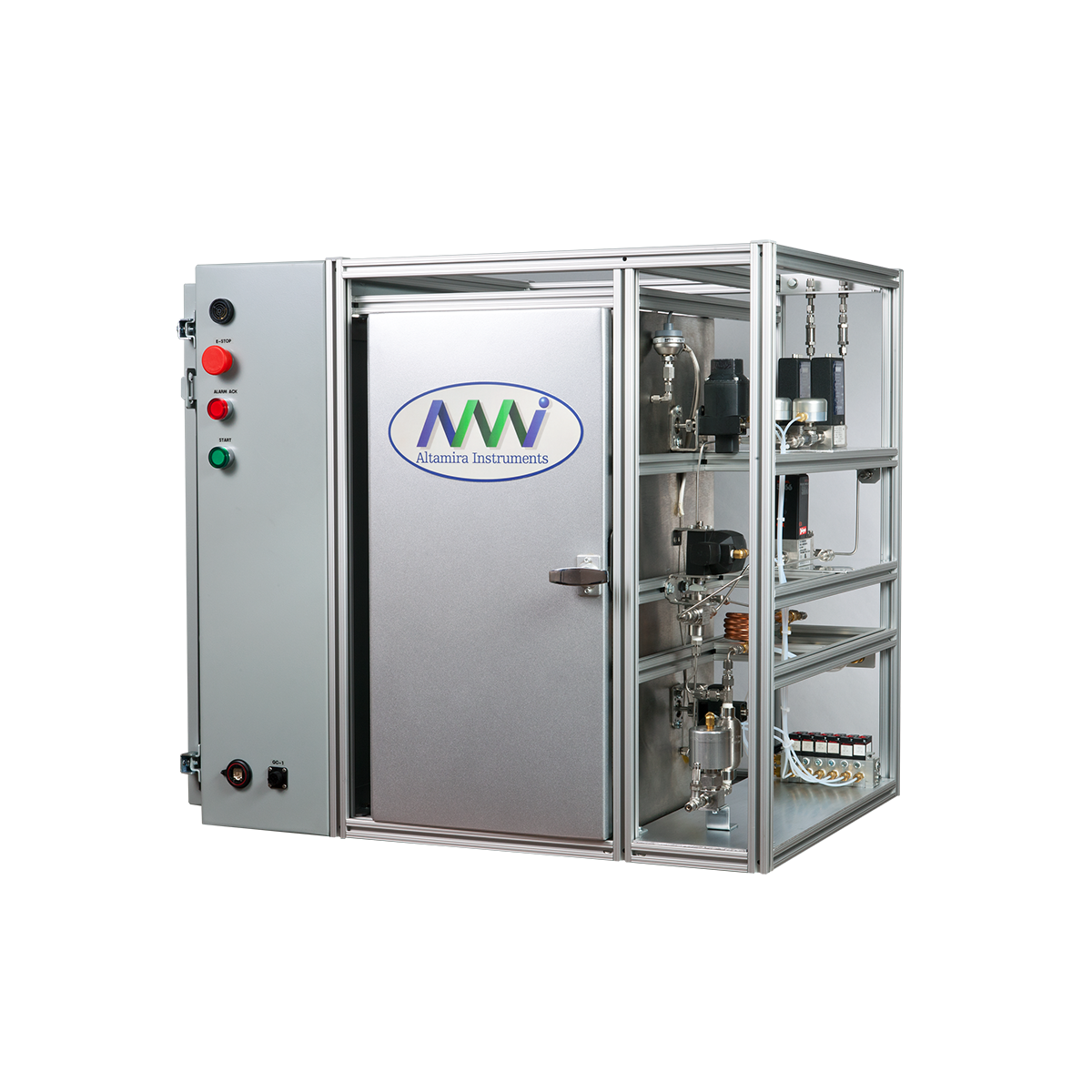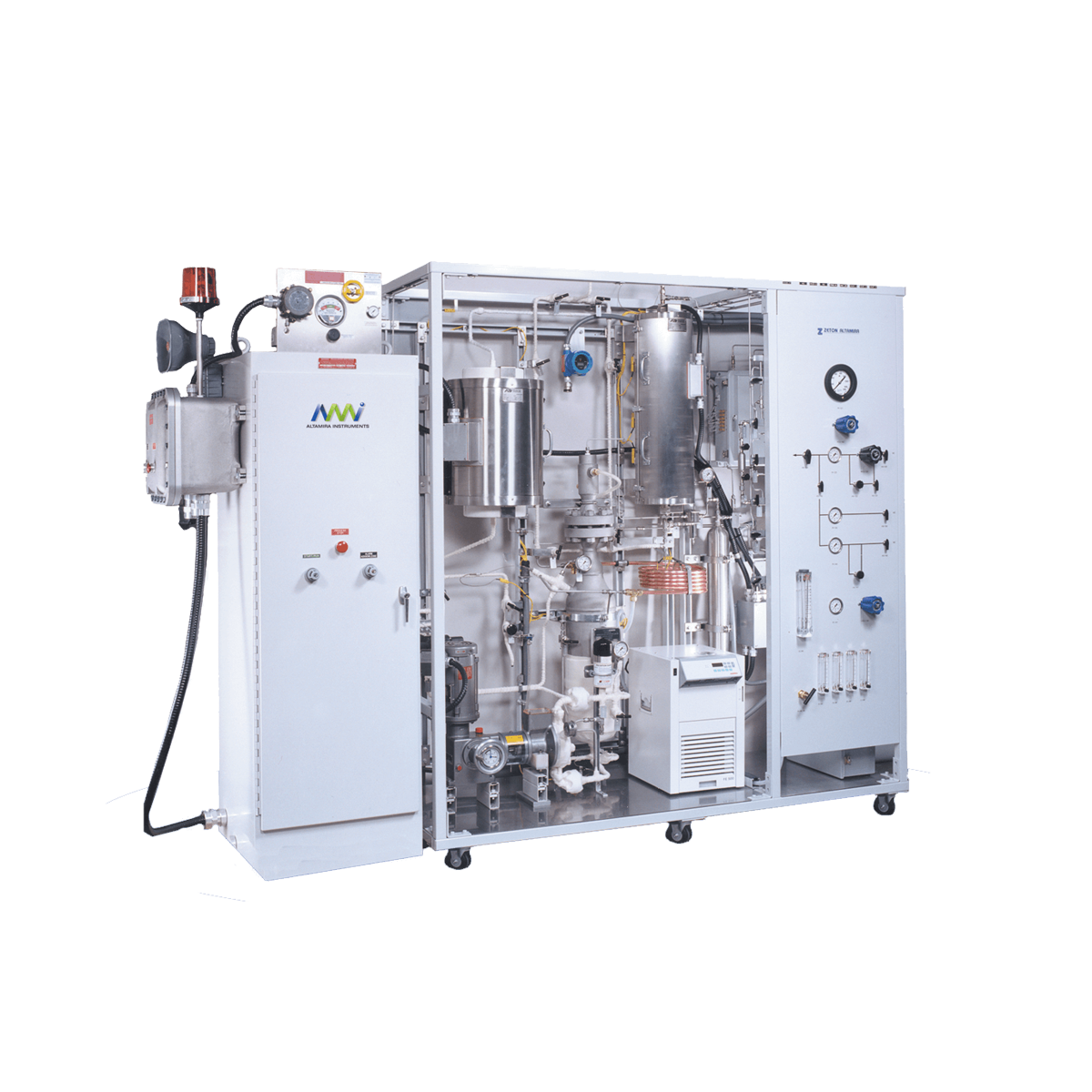Quantitative monitoring of the chemisorption of certain permanent gases such as H2, 02, N2, or CO is a well-established method for determining metal crystallite size. In volumetric chemisorption experiments, equilibrium adsorption is carried out in a high vacuum system capable of accurate P-V-T measurements. The pressures (< 1 atm) and temperatures (usually ambient) employed allow the use of the ideal gas law, PV = nRT (R = ideal gas law constant, determined by R = PV/T for 1 mole of gas at STP).
The most convenient experimental setup is one in which the volume of the system and the temperature are known constants, and the number of moles of gas in the system is calculated by measuring the pressure. The moles of gas removed from the gas phase by chemisorption on the catalyst surface is measured as a decrease in pressure of the system at constant volume and temperature. This measurement is repeated by admitting more gas into the system and calculating a new equilibrium pressure to complete an isotherm of moles adsorbed vs pressure. Extrapolation to P = 0 yields the total chemisorption uptake (see figure on following page).
The most important question is how to relate the experimental measurement, the uptake of adsorbate, to the desired catalyst characteristic, the size of the metal crystallites. This is where the parameter of the adsorbate:meta1 stoichiometry is introduced. It is conventionally assumed that chemisorption of atoms or molecules occurs on metal surfaces in a well-defined way. Adsorption is limited to one layer or less on surface metal atoms alone, with a constant number of atoms or molecules adsorbing on each surface metal atom. If this stoichiometry is known, the number of surface metal atoms is easily calculated from the chemisorption uptake. Since the surface area of a single metal atom is known, the surface area of all the exposed metal atoms can then be calculated.
How is this adsorption stoichiometry established? Chemisorption measurements must be carried out in conjunction with another, independent measurement of crystallite size to determine nads:Ms for each new adsorbate: meta1 combination. Fortunately, extensive experiments have established adsorption stoichiometries for a number of common systems, as shown below. For these cases, crystallite size determination by volumetric chemisorption has become a routine characterization tool.
Metal Adsorbate Stoichiometry Reference
Ni H2 Hads:Nis = 1:1 (3)
Ni CO COads:Nis = 0.5-3:1 (4)
Pt H2 Hads:Pts = 1:1 (5)
It is important to mention that each of the stoichiometries listed in the table above were determined for a particular set of experimental conditions. These ratios are likely to change with temperature. This means that there is no "correct" stoichiometry or "standard" experimental conditions, and that volumetric chemisorption experiments should always be carried out under whatever conditions were used to establish the adsorbate:meta1 stoichiometry.
Another important experimental variable is adsorption time. Volumetric chemisorption is assumed to be a measurement of the equilibrium chemisorption uptake by the surface; in other words, the maximum amount which may be adsorbed at the temperature of the experiment. The time required to reach this equilibrium will vary depending on the type of metal and adsorbate and the temperature, and this time may range from minutes to hours to days. Experiments completed before equilibrium is attained will measure erroneously low adsorbate uptakes.
The first step in volumetric chemisorption is to calculate the number of moles of adsorbing gas ni introduced into a known volume Vk, at pressure Pi and temperature T. This gas is then expanded into the known sample volume Vs and is allowed to equilibrate to a final pressure Pf . The number of moles taken up by the sample equals the initial amount of gas minus the amount left in the gas phase after adsorption equilibrium is attained:
nads = ni – [Pf*(Vk+Vs)/(R*T)]
The data obtained from volumetric chemisorption is of the same form as that obtained from temperature-programmed desorption: an uptake, or moles of gas adsorbed, per atom of metal. Even though volumetric chemisorption experiments are governed by a relation as simple as the ideal gas law, use of the data to determine metal crystallite size requires some understanding of the chemistry of the catalyst system involved, just as was found for temperature-programmed desorption data.
Strength of adsorption is often an important parameter in catalyst characterization. The equilibrium adsorption measured in volumetric chemisorption experiments may include adsorption on sites with adsorption strengths ranging from the very strong to the weakest adsorption possible at the adsorption temperature. Many researchers recognize two types of chemisorption called "irreversible", or strong chemisorption, and "reversible", or weak chemisorption.These terms are subjective and are not unequivocally defined, although reversible chemisorption usually refers to the amount of adsorbate which may be easily removed by a brief evacuation of the sample at ambient temperature. Here again the researcher wishing to use the volumetric chemisorption technique should pay close attention to the work of others on similar systems: for example, when Hg is adsorbed on Ni or Rh, the total amount adsorbed (irreversible + reversible) is used in calculating metal crystallite sizes based on Hads:Ms = 1:1, while for the same adsorbate and stoichiometry on Ru, only the irreversible adsorption is counted. This suggests that on Ni and Rh, some surface metal atoms adsorb hydrogen more weakly than others although each still bonds only with one adsorbate atom; however, on Ru, the very strong adsorption accounts for one hydrogen atom per
RUg, and the weakly held hydrogen adsorbs with multiple hydrogen atoms per RUg. There is as of yet no general theory governing the different behavior of these systems, and hence specific information about different catalyst systems may only be obtained through exhaustive experimental work.
Metal crystallite sizes are determined by counting chemisorbed species in both volumetric chemisorption and temperature-programmed desorption experiments. A future Altamira Note in this series will address the questions: How do these techniques compare? Can a researcher expect to obtain the same crystallite size for the same sample using two different techniques?
References
1. J. Muller, Rev. Pure and App1. Chem. 19. 151 (1969).
2. T.E. White, Jr., Catalysis Reviews-Science and Engineering 8. 117 (1973).
3. C.H. Bartholomew and D.G. Mustard, Journal of Catalysis 67, 186 (1981).
4. D.G. Blackmond and E.I. Ko, Journal of Catalysis 96, 210 (1986)
5. L. Spenadel and M. Boudart, Journal of Physical Chemistry 64, 205 (1960).




